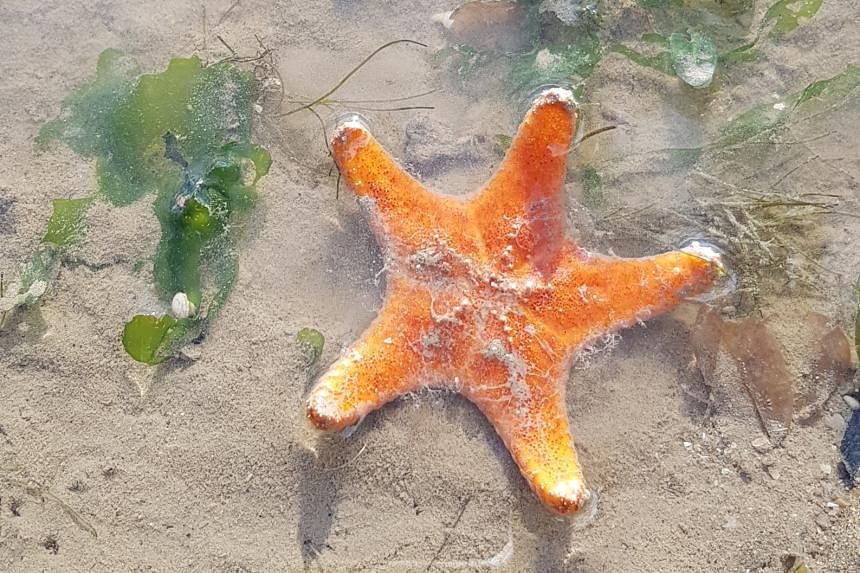For a long time, scientists have not been able to identify the heads of sea stars, more commonly known as starfish.
A sea star looks like it has five identical arms with a layer of tube-like structures beneath them that help the marine creature move on the sea floor.
But new research suggests that the “arms” are not arms, after all. Genetically speaking, sea stars are largely heads with no torsos or tails. They have most likely lost those features because of evolution.
The findings were published on Wednesday in the multidisciplinary science journal for peer-reviewed research, Nature.
“It’s as if the sea star is completely missing a trunk, and is best described as just a head crawling along the sea floor,” said lead study author Laurent Formery, post-doctoral scholar at Stanford University and the University of California, Berkeley, in a statement. “It’s not at all what scientists have assumed about these animals.”
Sea stars are categorised as echinoderms, which include sea urchins, sand dollars and sea cucumbers. The unusual animals have unique body plans arranged in five equal sections that differ greatly from the symmetric head-to-tail bodies of bilateral animals, with the left and right sides mirroring each other.
New methods of genetic sequencing have made the findings possible. Scientists believe that these findings could help answer some of the biggest remaining questions about echinoderms, including their shared ancestry with humans and other animals that look different from them.
“This has been a zoological mystery for centuries,” said senior study co-author Christopher Lowe, marine and developmental biologist at Stanford University, in a statement. “How can you go from a bilateral body plan to a pentaradial plan, and how can you compare any part of the starfish to our own body plan?”
The bilateral body plan most animals have stems from molecular-level genetic actions that can be traced in the head and trunk, main body or regions. Scientists believe that this is why vertebrates like humans and invertebrates like insects share similar genetic programming.
Researchers behind the new study used micro-computed tomography scanning to capture an unprecedented three-dimensional look at the shape and structure of sea stars.
A tomography scan is essentially an X-ray taken from different angles.
Members of the research team used advanced analytical techniques to spot where genes were expressed within the tissue and pinpoint specific sequences of RNA within the cells.
Together, the data created a 3D map to determine where genes are expressed as sea stars develop and grow.
The team was able to determine the genes that control the development of the starfish’s ectoderm, which includes its skin and nervous system.
Genetic signatures associated with the development of a head were detected all over the sea stars, especially concentrated in the centre of the star and the centre of each limb.
But gene expression for torso and tail sections were largely absent, revealing that sea stars “have the most dramatic example of decoupling of the head and the trunk regions that we are aware of today,” said Dr Formery, who is a researcher at the Chan Zuckerberg BioHub, a non-profit research organisation in San Francisco.
The research was funded by the Chan Zuckerberg BioHub – co-founded by social media mogul Mark Zuckerberg and his wife Priscilla Chan – as well as the US National Aeronautics and Space Administration, the US National Science Foundation and Britain’s Leverhulme Trust.


